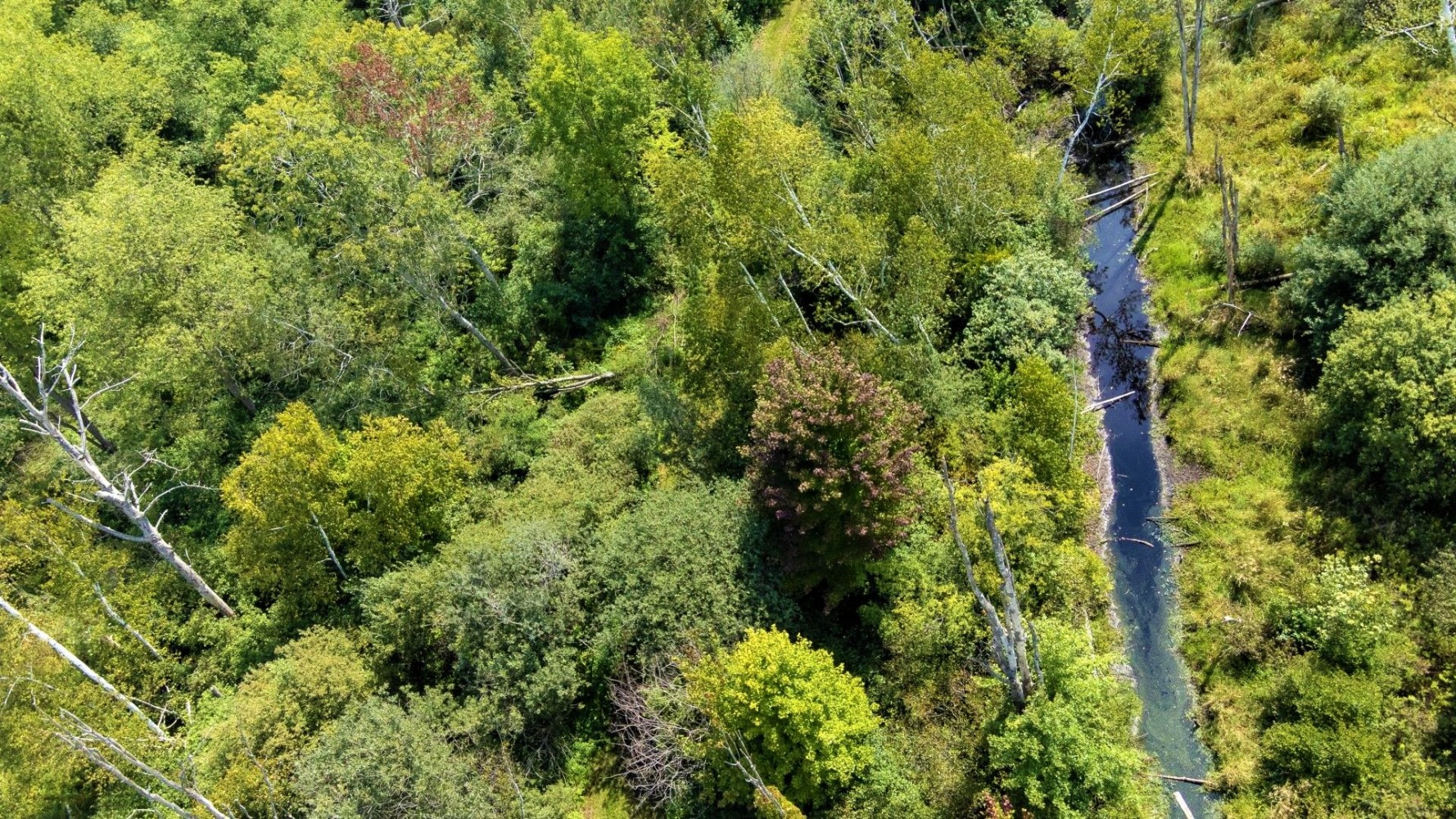
The NPCA is still plagued by outside interests; Niagara’s ecosystems are suffering the consequences
On August 25 the Board of the Niagara Peninsula Conservation Authority was informed that the Chair of the Public Advisory Committee had resigned.
The PAC collaborates with communities to provide guidance and expert advice on the implementation of the NPCA’s policies and plans.
While Jackie Oblak, the now former Committee Chair, has not publicly stated the reason for her resignation less than two years after her election to the role, it is widely believed she left due to expectations that the PAC act as cheerleaders for the NPCA, rather than providing objective advice.
Oblak has a history of working with conservation authorities and has in the past held the NPCA’s feet to the fire, making it clear she expected the conservation agency to uphold its fundamental mandate—to protect the local environment ahead of all other interests.
In 2019, when the NPCA considered adopting a climate emergency declaration, as worsening conditions continued to place more stress on the organization’s mandate, she told board members, “Following this declaration with immediate actions such as forming a climate change advisory committee, tasked with clearly identified responsibilities and timelines will provide assurances that the issue will be addressed in an effective, timely manner and provides substance to the declaration.”
She urged the NPCA to speed up its response to the local impacts of climate change.
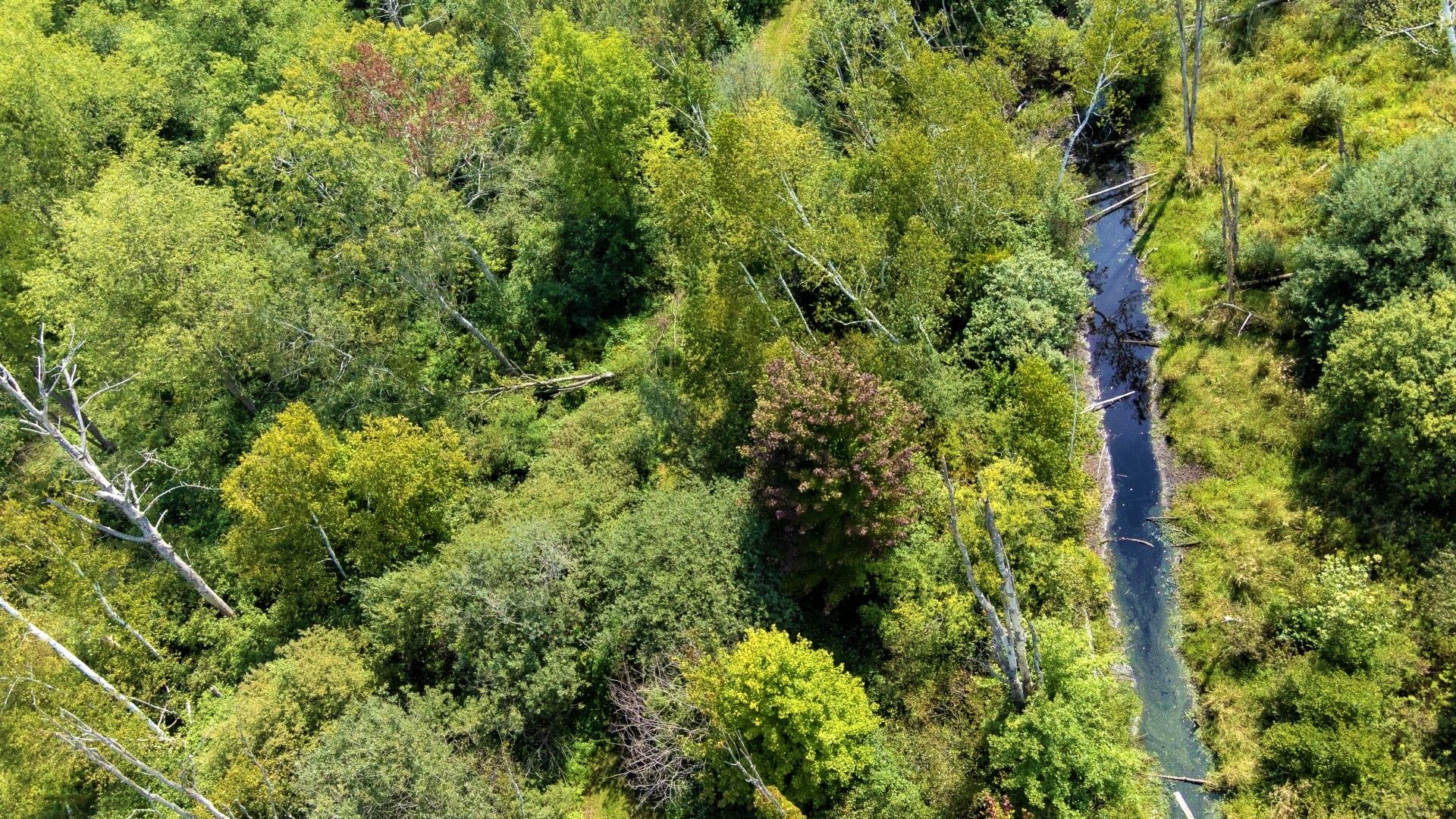
The Wainfleet Bog is one of Niagara's most sensitive wetland ecosystems.
(NPCA)
Her resignation weeks ago is the most recent example of concern four years after the last municipal election, that the NPCA is still plagued by outside interests that had infested the conservation agency when board members with direct ties to the Ontario PC Party undermined the organization’s mandate.
“Having the resignation of the Advisory Board Chair is a concern. And it shows you that she didn't feel that their input was welcome,” says Liz Benneian, the Director of A Better Niagara, a non-profit organization that encourages civic engagement and has closely monitored the actions of the NPCA. Benneian also sits as a member of The Pointer Niagara citizen editorial advisory board.
“In light of mounting criticisms of the Niagara Peninsula Conservation Authority (NPCA), the Standing Committee on Public Accounts of the Legislative Assembly of Ontario requested on October 25, 2017, that our Office conduct an audit of the NPCA.”
That was the opening sentence of Ontario Auditor General Bonnie Lysyk’s blistering 2018 investigation report on the NPCA.
After Lysyk’s investigation was announced, the NPCA wrote in 2017 that “the NPCA Board plays no part in the approval of planning applications or building permits.”
That was not what Ontario’s auditor general found when she went behind the curtains to examine the organization, which is supposed to act as a guardrail against developer interests. In many cases, board members were found to be doing the opposite.
“We found instances of some Board members being involved in the NPCA’s day-to-day operations,” Lysyk wrote in her 103-page report. “Their involvement ranged from asking for information about a development application to attending meetings between the NPCA and municipal staff to advising NPCA staff to revise their comments about a development application.”
It was shocking to those who assumed the conservation authority was working for the interests of the public, not developers. However, keen observers who pushed to get Lysyk involved had for years known some NPCA board members closely tied to the Ontario PC Party, such as Carmen D'Angelo, Tony Quirk and David Barrick, had politicized the NPCA.
“A key role of the Board is to provide a countervailing perspective by objectively assessing the assumptions and rationale behind management’s recommendations, and to do so through an official process at Board meetings,” Lysyk wrote. “Any degree of Board involvement in day-to-day operations is inappropriate because it compromises the Board’s objectivity in fulfilling its oversight role. It also has the potential to create a difficult working environment for employees.”
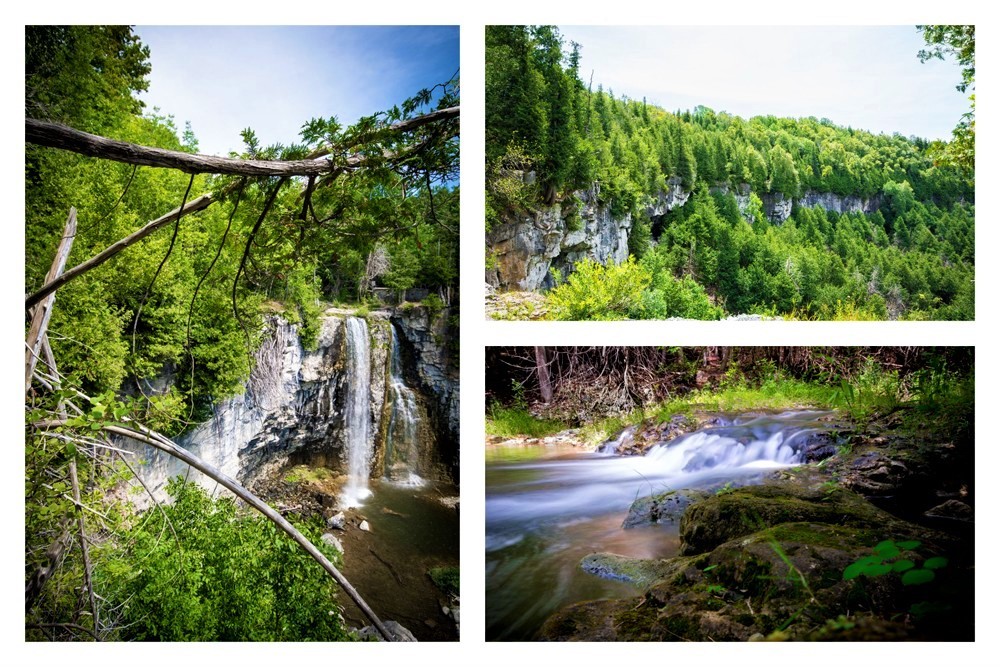
A key finding of the auditor general was the NPCA’s inherent conflict between municipal interests and environmental protection.
“Municipal priorities sometimes conflict with conservation authorities’ interests. Conservation authorities are governed by boards of directors whose members are appointed by the municipalities that provide funding to conservation authorities. The [Conservation Authorities] Act authorizes board members to ‘vote and generally act on behalf of their respective municipalities.’”
Lysyk wrote that NPCA board members therefore sometimes were compromised “when municipal interests conflict with the interests and responsibilities of conservation authorities and their employees.”
Because municipalities provide the majority of funding for local conservation authorities, “this dependence may present challenges for conservation authorities, including their boards, to make decisions independent from municipal pressures.” She said this conflict was particularly problematic when members of the NPCA board also served as elected members of their municipal council. She highlighted one such conflict that clearly showed the NPCA mandate was undermined by one of its own board members, who placed economic interests above conservation interests.
“In 2017, a municipal staff member contacted their Board representative at the NPCA when the NPCA assessed that the municipality’s proposed amendment to its municipal plan that would allow future development on a floodplain is not allowed under provincial legislation and policies. The Board member contacted the NPCA’s Chief Administrative Officer (CAO) to discuss the matter. Following the discussion, meeting notes on file indicate that the CAO told the municipality that the NPCA would not appeal if the municipality went ahead with the plan. The municipality did go ahead, and the NPCA did not appeal.”
“It's engineering first, it's people first, it's never environment first,” says Anne Yagi, the founder of 8Trees Inc. and a biologist who has been working to help preserve the Wainfleet Bog since 1998.
It’s a large protected wetland in the Township of Wainfleet and is southern Ontario’s largest surviving bog, with underlying peat, sphagnum moss and rare plants such as Labrador Tea, Cotton Grass and Leatherleaf.
Butterflies, birds and animals have taken advantage of restored habitats now protected within the provincially sensitive wetland.
Yagi is one of many locals who fears their conservation efforts won’t be supported if economic pressures take priority.
The concerns are exacerbated by the funding arrangement Lysyk pointed to. The NPCA receives just over half its annual funding from the municipalities it serves, 10 percent from the Province and three percent from the federal government. The remaining money comes from donations, services and parks fees.
This means there are three main stakeholders: the Ministry of the Environment, Conservation and Parks which administers the Conservation Authorities Act, municipalities that provide funding through levies and the public whose interests the conservation authorities are mandated to protect.
With municipalities providing just over half the funding, and economic development often taking priority for them, questions arise over whether public interests around conservation and sustainability, which have increasingly significant economic consequences, are being served.
“So [the municipalities] are holding the purse strings. They're also receiving the development applications. And they're also sitting on the Conservation Authority Board,” Benneian said. “It sounds like there's so many opportunities for conflict of interest.”
The hiring of the NPCA’s former CAO, Carmen D’Angelo, was mired in conflict, in a process that many observers found hard to believe.
He was a board member who suggested the hiring of a consultant for some organizational review; he then took a leave in 2013 to provide the very sole sourced consulting services to the NPCA that he had suggested; then in 2014, after he was involved as a consultant in the negotiation of the CAO’s retirement, he was made the new CAO by the board.
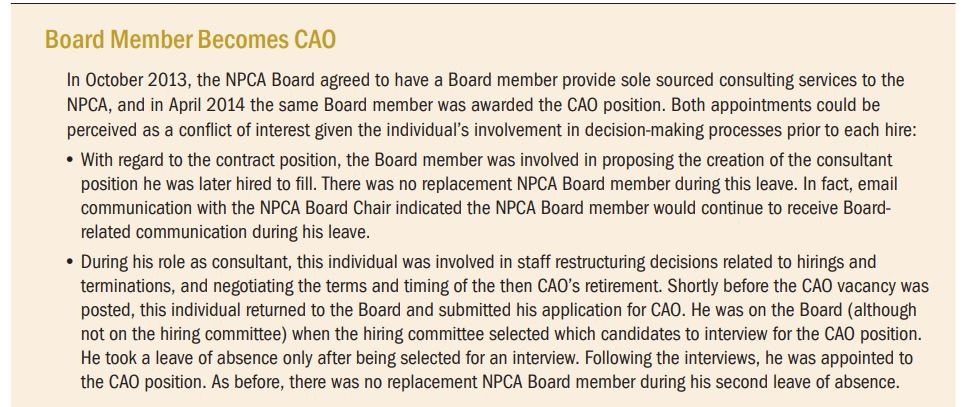
The Ontario Auditor General's report on the NPCA showed how its former CAO was hired.
(Government of Ontario)
During D’Angelo’s controversial leadership, the conservation authority pushed forward approvals that went against the mandate.
Then, in 2016, he was hired through a rigged process as Niagara Region’s CAO, when regional politicians and staff conducted what Ontario’s Ombudsman later described as an “Inside Job” recruitment.
Shortly after D’Angelo’s departure from the NPCA to the regional CAO job, David Barrick, a Port Colborne councillor who had sat on the NPCA board before being given a senior management position with the conservation authority, took over an executive position with the organization. He was implicated in the Inside Job scandal that saw D’Angelo land the regional CAO role.
With its former leader calling the shots as the new CAO of Niagara Region, the NPCA issued a tree-cutting permit in a protected Niagara-on-the-Lake woodlot to a developer who had pushed for the area’s agricultural zoning to be changed to allow subdivision construction.
Betty Disero was a NOTL councillor at the time. She questioned why the NPCA issued the forestry permit in 2017 but was met with stern opposition from the former mayor, Pat Darte, who refused to support a motion brought forward to town council by Disero seeking to find out why the NPCA had authorized the clear cutting of an entire woodlot in a protected area that was not zoned for residential development.
Darte claimed the permit was properly issued by the NPCA. He also defended the developer, along with five other council members who shot down Disero’s motion which simply sought answers about how the clear cutting happened without council approval.
Darte also sat on the NPCA board at the time.
It turned out that the NPCA’s justification for issuing the forestry permit to cut down the trees was riddled with problems.
It knew the woodlot was a key part of the Greenbelt Plan’s Natural Heritage System, its justification of an Emerald Ash Borer infestation was refuted by an expert who only found a small number of trees that were threatened, and the area of the clear cutting went far beyond the area allowed under the NPCA permit, yet it took no action.
In 2018 Disero defeated Darte and became Lord Mayor of NOTL.
Problems at the organization had begun years earlier.
Between 2012 and 2014, the NPCA fired 20 percent of its staff including many long-serving senior employees. This is when Barrick stepped onto the scene, first as a board member who also served as a Port Colborne councillor, then as a senior manager hired to the role thanks to his political allies on the board, in what Lysyk described as an “unposted position”. Barrick served as the NPCA’s corporate services director from 2013-2018, he was then fired before being rehired and briefly served as CAO before he stepped down when Hamilton and Niagara councillors blasted him for presenting an NPCA budget that could not account for more than $2 million in spending, about 20 percent of the total.
The awarding of his original job at the NPCA was flagged by the Ontario auditor general as an example of unfair hiring practices at the Conservation Authority.
Lysyk’s audit found weak governance and operational practices as well as significant issues with procurements, human resources and flood mapping. For example, since the suspension of its restoration program in 2017, the NPCA had not done any work on improving water quality.
The investigation was launched in October 2017 after several calls from the public to look into the NPCA’s operations. The NPCA pushed back hard against the audit and opted to hire a third-party agency to complete the task. When the hiring process fell through, the provincial public accounts committee asked the Ontario auditor general to complete the investigation.
Benneain said from her perspective it seems the NPCA has cleaned up its act on the administration side but has done very little to create better environmental policies and practices.
Ed Smith, a member of the NPCA board since 2019, agrees.
“This board has responded to the governance concerns, but has been slow or hesitant to address the policy issues. And when I say policy issues, I would define it as I call them, the green policies, the policies that matter to the environment; those policies that people think about when they think about conservation authorities.” Smith also serves as a member of The Pointer Niagara’s citizen editorial advisory board.
Smith is not an elected official, he was appointed to the NPCA board as a citizen. He said he has received calls from elected officials warning him about speaking out against the NPCA as a condition of his appointment.
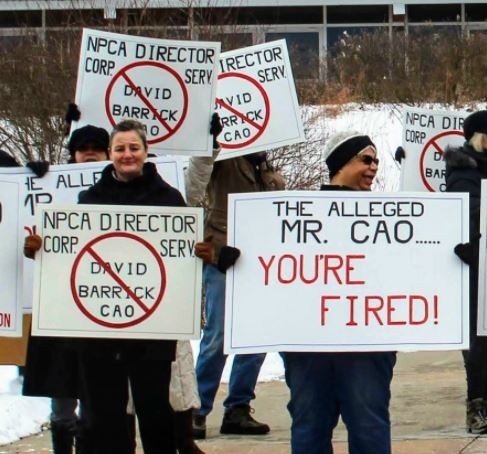
Niagara citizens called for David Barrick's firing when he was briefly the NPCA's CAO.
(Doug Draper/Niagara at Large)
Despite four restructurings, an investigation by the Auditor General and another by the Ontario Ombudsman, the NPCA continues to deviate from its mandate: to “promote, enhance and sustain healthy watersheds”.
One example of this is the drainway running through the Wainfleet Bog.
Located in the Wainfleet Bog Conservation Area in Port Colborne, it is the largest remaining bog in southern Ontario and provides habitat for one of the few remaining populations of the Massasauga rattlesnake in Ontario. But that population is in danger as the Biederman drain cuts through the south end of the bog depositing into the Welland Canal.
“They're a species that's adapted to bogs. So they can survive low oxygen environments, but not no oxygen environments,” Yagi says.
Originally the Biederman drain ran south of the bog through farmers fields. But at some point between 1935 and 1945 a new drain was dug 300 metres north of the original, right through the south end of the bog to better prepare it for peat extraction.
The drain creates lower water levels in the bog, sometimes causing it to dry completely leaving it susceptible to catching on fire, a phenomenon that has occurred, causing irreparable damage to the plants and animals living within the bog.
Yagi has been advocating to return the Biederman drain to its original location.
“We have been working with the Conservation Authority for years, and we've been discussing moving the drain out of there,” she says. “But they hadn't gone through all their different steps to come to that same conclusion themselves. So we weren't at the same place in understanding the impacts.”
Yagi was part of a delegation of experts who went to the municipality to request the drain be reformed in its original location. However, since the landowners (the NPCA) were not present, there was nothing the municipality could do.
“I don't want to blame the Conservation Authority at all on anything,” Yagi said. “It's just that they have a mandate to regulate… and they can't seem to differentiate between the significance of this site over where the drain used to be.”
A concern for those pushing the NPCA to follow its core mandate is that four years after the changes at the board following the 2018 election when some members were ousted, the developer-friendly policy changes remain. While a recent policy review has been undertaken and, with a consultant's report supporting the reinstatement of more standard, robust policies geared to actual protection of significant environmental features, correcting flawed policies introduced over the past decade has not been a priority for the NPCA.
“In the current policy for the NPCA, it says, ‘Unless otherwise stated in this document, no development and site alteration shall be permitted within 30 metres of a wetland’”, Benneian explained. “Great, perfect. Okay, that seems pretty clear. Then they go on for two pages giving the exceptions to that.”
The end result, Benneian says, is that buffers of 15 metres or less from sensitive wetlands facing development and other encroachments—which provide little protection while appearing to take action—seem to have become the rule, rather than the exception.
Another recent example of the NPCA using an exception instead of following its mandate was around a decision involving 12 Mile Creek.
In March 2017, Niagara won the bid to host the Canada Summer Games. The Games were working with Brock University to create a mountain bike course on extensive existing trails around the university.
Two-and-a-half-years later, in November 2019, discussions halted between the Games and Brock. Then, in January 2021, discussions between the City of St. Catharines and Ontario Power Generation (OPG) regarding OPG-owned lands around 12 Mile Creek were formalized.
The creek is an environmentally sensitive and biologically diverse ecosystem with Carolinian forests, clay soils with high water content and extensive wildlife and plant species. The ravine is already outlined with trails and the Canada Summer Games Chair claimed there would only be “upgrades of safety and other minor improvements to the trail system”.
However, new trails continue to be built ripping through the sensitive ecosystem surrounding 12 Mile Creek. In addition, existing trails were dug out for mountain bikes.
The destruction of a natural ecosystem led to complaints to the NPCA and the organization’s eventual involvement.
Two NPCA staff went on a site visit in late 2021 to assess the complaints. As many as 14 other individuals including the Mayor of St. Catharines, the Chair of the Host Society for the games, OPG representatives and other Games staff were present. The normal process is to allow the NPCA to conduct their investigation independently, without undue influence.
But the investigation into the bike course at 12 Mile Creek was disrupted.
“There are certain people who are entitled to be there, that is the landowner and maybe the landowners representative, as they walk around and see what the conditions are,” Smith explained. “There is no need for, nor is there any expectation, nor should it happen that any elected officials are attending and spending an hour with staff talking to them as they walk around trying to do what should be a very straightforward and science driven assessment of the situation. That can easily be interpreted as exerting undue influence. I don't care if the mayor just spoke friendly or, or if they yelled at the top of their lungs.”
On November 12, 2021, the NPCA approved a work permit application to allow the continued construction on the racecourse at 12 Mile Creek. This work permit was given despite the NPCA having a policy that states no permanent structures can be built between the top of slope and toe of slope in a ravine area. The Mountain bike course has more than a dozen permanent structures that were constructed on the slope of the ravine as part of the course.
One week later, Friends of 12 Mile Creek as well as NPCA staff made a presentation to the NPCA board regarding the details surrounding the permit. The Chair responded: “Not knowing about this until recently, we find ourselves with one hand tied behind our back in a way”.
A motion was passed at the Board meeting that a letter be sent to the Canada Summer Games seeking dialogue on the future condition of the site.
The lack of action at the NPCA level left the Friends of 12 Mile Creek exasperated, frustrated that their complaints were dismissed. The group detailed a letter to the NPCA outlining their objections to what had occurred at the board meeting. No direct response has been received to date.
“Most municipalities don't have any experts on staff in their municipalities. They don't employ biologists, they don't employ urban foresters,” Benneian said. “And so everybody looks to the NPCA. But the NPCA, itself does not look at itself as an environmental protection group.”
Angered by the mishandling of development applications by the NPCA, citizens like Benneian are calling for more change in the upcoming municipal election on October 24. She wants to see elected and appointed leaders who understand and accept their responsibility as stewards of the environment, otherwise the only hope will continue to be be citizens on the outside looking in.
“That's what we've gotten down to now, the only real advocates for the environment are the citizens.”
Email: [email protected]
Twitter: @rachelnadia_
COVID-19 is impacting all Canadians. At a time when vital public information is needed by everyone, The Pointer has taken down our paywall on all stories relating to the pandemic and those of public interest to ensure every resident of Niagara has access to the facts. For those who are able, we encourage you to consider a subscription. This will help us report on important public interest issues the community needs to know about now more than ever. You can register for a 30-day free trial HERE. Thereafter, The Pointer will charge $10 a month and you can cancel any time right on the website. Thank you
Submit a correction about this story


